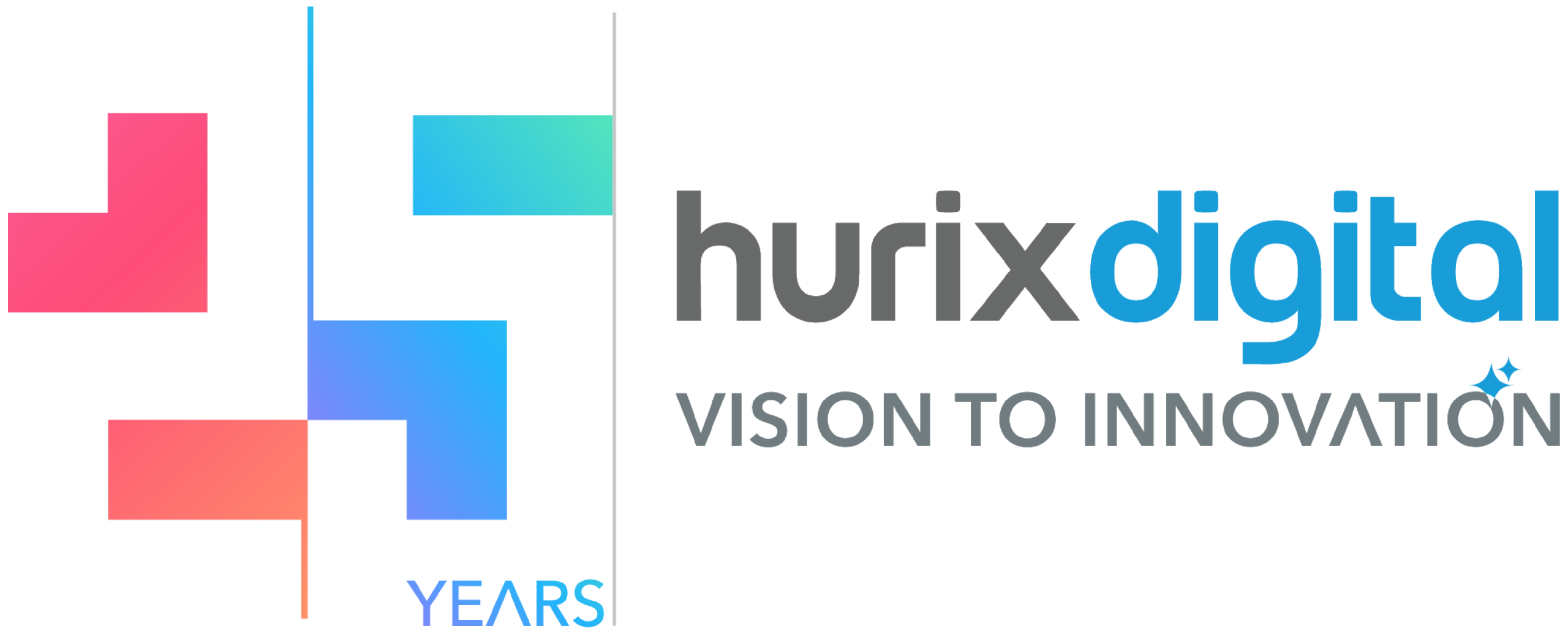
What Is XML DTD and Why Does It Matter for Digital Publishing
In the fast-paced world of digital publishing, staying ahead of the competition and delivering high-quality content to readers is crucial. Publishers need advanced tools and technologies to transform their content seamlessly from one format to another. XML conversion has become a popular choice due to its flexibility and structured nature, enabling better content management and distribution.
At the heart of successful XML conversion lies the Document Type Definition (DTD), a powerful mechanism that ensures accuracy, consistency, and efficiency in document transformation. Whether you’re working with specialized DTDs like Atypon XML DTD, JATS DTD, or NLM DTD, understanding how to leverage these standards can revolutionize your digital publishing workflow.
In this comprehensive guide, we dive deep into the world of XML DTD and explore how industry-specific standards can help you achieve seamless content conversion and management.
Table of Contents:
- Understanding XML DTD: The Foundation of Structured Documents
- What is Atypon XML DTD?
- Why is XML DTD Important?
- Advantages and Disadvantages of Using DTD for XML Documents
- Understanding JATS DTD for Scientific Publishing
- Leveraging NLM DTD for Biomedical Content
- How XML DTD Standards Can Be Helpful
- When to Use Different DTD Standards
- The Power of DTD-Based XML Conversion in Digital Publishing
- Partner with Hurix Digital for XML Conversion Services
- Conclusion
Understanding XML DTD: The Foundation of Structured Documents
Document Type Definition (DTD) serves as a blueprint outlining the components, attributes, and their correlation in a document. It is a set of guidelines establishing a particular kind of SGML family document, such as GML, SGML, HTML, and XML. DTD, known as the XML Document Type Declaration, is a mechanism that accurately specifies the XML language.
DTDs verify that an XML document’s vocabulary and structure adhere to the XML language’s relevant grammatical rules. It represents a contract between the parties creating and consuming the document by defining elements, properties, and their relationships. Developers ensure that their documents are legitimate, properly structured, and interoperable across many platforms and systems by complying with the criteria specified in a DTD.
Why DTD Matters for XML Documents
There are several compelling reasons why DTD is essential for XML documents:
- Data Validation: DTD can be used to define the data types, elements, attributes, and relationships that are allowed in an XML document. This allows software applications to validate the structure and content of the document against the DTD, and to identify any errors or inconsistencies that may be present.
- Interoperability: By defining a common structure and format for XML documents, DTD enables different systems and applications to exchange and process data more easily. This is particularly important in industries like publishing, healthcare, and scientific research, where standardization is critical.
- Documentation: DTD serves as a form of documentation for XML documents, making it easier for developers and content creators to understand the structure and requirements of the document.
- Consistency: DTD ensures that all documents following the same standard maintain consistent structure and formatting, which is crucial for automated processing and content management systems.
What is Atypon XML DTD?
Atypon DTD is a specialized Document Type Definition (DTD) designed by Atypon, a leading provider of publishing solutions and services. It is specifically tailored to meet the unique requirements of scholarly and professional publishers. Atypon XML DTD provides a standardized framework for structuring and organizing content, making it easier to convert, manage, and distribute digital publications.
Atypon XML DTD defines the elements, attributes, and relationships within an XML document, ensuring consistency and accuracy throughout the conversion process. It encompasses various content types, including journal articles, books, reference works, and other scholarly materials. By adhering to the Atypon XML DTD guidelines, publishers can streamline their workflows, improve content discoverability, and enhance the overall reading experience.
Why is XML DTD Important?
The importance of XML DTD in digital publishing cannot be overstated. Here’s why it matters:
- Standardization: XML DTD provides a standardized structure for organizing and representing content. This standardization ensures that content from different sources can be easily integrated, exchanged, and processed by various systems and platforms.
- Data Integrity: By defining the rules and constraints for XML documents, DTD helps maintain data integrity. It ensures that the content adheres to specific guidelines, reducing the risk of errors, inconsistencies, and data corruption.
- Interoperability: XML DTD facilitates interoperability between different systems and applications. Publishers can seamlessly exchange content with partners, aggregators, and distribution platforms, enabling wider reach and accessibility.
- Content Reusability: With XML DTD, content can be easily repurposed and reused across multiple platforms and formats. Publishers can extract specific sections or elements from XML documents and adapt them for different purposes, such as creating summaries, abstracts, or promotional materials.
- Future-Proofing: XML DTD provides a future-proof solution for content management. As technology evolves, XML documents can be easily transformed and adapted to meet new requirements without losing the underlying structure and integrity of the content.
Advantages and Disadvantages of Using DTD for XML Documents
Understanding both sides helps publishers make informed decisions. Here are the key advantages of using DTD:
Pros of Using DTD for XML Documents:
- Validation and Quality Assurance: DTD enables validation of XML documents against predefined rules, ensuring that the content meets specific quality standards and structural requirements.
- Simplified Content Management: With a well-defined DTD, content management becomes more straightforward. Publishers can easily identify and organize different content elements, making it easier to search, retrieve, and update information.
- Enhanced Collaboration: DTD provides a common language and framework for collaboration among authors, editors, and production teams. Everyone involved in the publishing process can work with a shared understanding of the document structure.
- Automated Processing: DTD-compliant XML documents can be processed automatically by various software tools and systems, reducing manual intervention and accelerating the publishing workflow.
- Legacy System Support: DTD has been around for a long time and is well-supported by legacy systems, making it a reliable choice for organizations with established infrastructure.
- Simplicity: DTD syntax is relatively simple and easy to learn compared to more complex schema languages.
Cons of Using DTD for XML Documents:
- Limited Data Type Support: DTD has limited support for data types compared to XML Schema. It primarily supports text-based data types and lacks the rich data type definitions available in newer schema languages.
- No Namespace Support: DTD does not have built-in support for XML namespaces, which can be a limitation when working with complex documents that integrate content from multiple sources.
- Less Expressive: DTD is less expressive than XML Schema when it comes to defining complex constraints and relationships between elements.
- Maintenance Challenges: As publishing requirements evolve, maintaining and updating DTDs can become challenging, especially for large and complex document structures.
- Limited Modularity: DTD lacks the modularity features found in XML Schema, making it harder to reuse and extend existing definitions.
- No XML Syntax: DTD uses its own syntax rather than XML syntax, which can be less intuitive for developers already familiar with XML.
Despite these limitations, DTD remains a valuable tool in the XML ecosystem, particularly for established publishing workflows and when working with industry-specific standards like Atypon, JATS, and NLM DTDs.
Understanding JATS DTD for Scientific Publishing
Journal Article Tag Suite (JATS DTD) is an XML document type definition specifically designed for scientific publishing. It has a comprehensive set of rules and guidelines that define the structure, semantics, and metadata of XML documents in the context of journal articles and scientific manuscripts.
Key Features of JATS DTD
JATS DTD’s robust framework is built on four foundational pillars that support scientific content management:
- Comprehensive Metadata Support: JATS DTD provides extensive support for bibliographic metadata, author information, affiliations, funding details, and other critical information required in scientific publishing.
- Flexible Content Structure: The standard accommodates various article types, including research articles, review articles, case reports, and editorials, each with their specific structural requirements.
- Rich Semantic Markup: JATS DTD includes detailed semantic tags for scientific content, including mathematical equations, chemical formulas, figures, tables, and references.
- Version Evolution: JATS has evolved from the earlier NLM DTD (National Library of Medicine DTD) and continues to be maintained and updated to meet the changing needs of scientific publishers.
Benefits of JATS XML Conversion
JATS XML conversion offers five compelling advantages that enhance both content quality and operational efficiency:
- Standardization and Consistency: JATS DTD ensures that journal articles follow a standardized structure, making it easier to manage, search, and retrieve content across different publications and platforms.
- Enhanced Discoverability: By using JATS DTD, publishers can improve the discoverability of their content through better indexing and metadata management, leading to increased visibility in academic databases and search engines.
- Efficient Data Transformation: JATS XML conversion enables efficient transformation of content from various source formats (Word, PDF, InDesign) into a structured XML format that can be easily adapted for multiple output formats.
- Seamless Integration: JATS-compliant XML documents can be seamlessly integrated with publishing platforms, content management systems, and digital repositories.
- Long-term Preservation: JATS provides a stable, standardized format for long-term archival of scientific literature, ensuring that content remains accessible and usable for future generations.
Leveraging NLM DTD for Biomedical Content
The National Library of Medicine Document Type Definition (NLM DTD) is a specialized set of rules defining the structure and semantics of XML documents used in the biomedical field. It ensures adapting to a standardized format, data interchange across different systems and platforms, and consistent content presentation.
Understanding NLM DTD and XML Conversion
NLM DTD was originally developed by the National Library of Medicine to support PubMed Central and other biomedical literature repositories. While JATS DTD has largely superseded NLM DTD, many legacy systems and archives still use NLM DTD, making it important to understand both standards.
Benefits of XML Conversion with NLM DTD
NLM DTD’s specialized framework offers unique benefits designed specifically for the demands of biomedical literature:
- Consistent XML Tagging: NLM DTD provides a standardized set of tags and elements specifically designed for biomedical literature, ensuring consistency across different publications and platforms.
- Accurate Data Processing: The structured nature of NLM DTD enables accurate extraction and processing of critical information such as author names, affiliations, abstracts, keywords, and references.
- Seamless Integration: NLM DTD-compliant documents can be easily integrated with biomedical databases, research platforms, and digital libraries like PubMed Central.
- Efficient Data Transformation: NLM DTD facilitates efficient conversion of biomedical content from various source formats into a structured XML format suitable for digital publishing and archival.
How XML DTD Standards Can Be Helpful
XML DTD standards deliver transformative advantages across the entire publishing lifecycle, from content creation to distribution:

1. Structured Content Management
One of the primary advantages of using XML DTD standards like Atypon, JATS, or NLM is the ability to manage content in a structured manner. XML DTD provides a clear hierarchy and organization of content elements, making it easier to navigate, search, and retrieve specific information. Publishers can efficiently manage large volumes of content and ensure consistency across different publications.
2, Content Transformation and Reusability
XML DTD enables seamless content transformation and reusability. Publishers can convert content from various source formats (such as Word documents, PDFs, or InDesign files) into XML using the appropriate DTD. Once in XML format, the content can be easily repurposed for different platforms, such as websites, mobile apps, e-books, or print publications. This flexibility saves time and resources while maintaining content integrity.
3. Enhanced Collaboration
XML DTD standards facilitate enhanced collaboration among different stakeholders in the publishing process. Authors, editors, designers, and production teams can work with a common framework and understanding of the document structure. This shared language reduces miscommunication and streamlines the workflow, leading to faster publication cycles.
4. Streamlined Publishing Workflow
By adopting XML DTD standards, publishers can streamline their entire publishing workflow. The structured nature of XML allows for automated processing, validation, and transformation of content. This automation reduces manual intervention, minimizes errors, and accelerates the time-to-market for publications.
5. Search Engine Optimization (SEO)
XML DTD-based content is inherently more SEO-friendly. Search engines can easily crawl and index structured XML content, improving the discoverability of publications. Proper use of metadata, semantic tags, and structured data helps search engines understand the content better, leading to higher rankings and increased visibility.
6. Data Interoperability
XML DTD standards promote data interoperability across different systems and platforms. Publishers can easily exchange content with partners, aggregators, distribution platforms, and digital libraries. This interoperability expands the reach of publications and ensures that content is accessible to a wider audience.
7. Long-term Preservation and Accessibility
XML DTD provides a stable, standardized format for long-term content preservation. Unlike proprietary formats that may become obsolete, XML documents based on established DTD standards remain accessible and usable over time. This is particularly important for academic and scientific publishers who need to maintain archives for decades.
When to Use Different DTD Standards
Match your DTD choice to your publishing context using these practical guidelines for each standard, as given below.

Use Atypon XML DTD When:
- You’re working with a diverse range of scholarly and professional publications
- You need flexibility to handle journals, books, reference works, and other content types
- You’re using Atypon’s Literatum platform or similar publishing systems
- You require a robust framework that supports complex publishing workflows
- You need to manage both current and legacy content within a unified system
Use JATS DTD When:
- You’re publishing peer-reviewed scientific and medical journal articles
- You need comprehensive support for scientific notation, equations, and formulas
- You’re submitting content to PubMed Central or similar repositories
- You require detailed bibliographic and citation metadata
- You’re working with STM (Scientific, Technical, and Medical) publishers
- You need compatibility with major academic databases and indexing services
Use NLM DTD When:
- You’re working with legacy biomedical content originally tagged in NLM format
- You’re maintaining archives that use NLM DTD standards
- You need compatibility with older PubMed Central submissions
- You’re migrating content from NLM DTD to JATS DTD and need to understand both standards
- You’re working with biomedical literature repositories that still support NLM format
The Power of DTD-Based XML Conversion in Digital Publishing
The adoption of XML DTD standards represents a strategic investment in the future of digital publishing. Here’s how it transforms the publishing landscape:
- Accelerated Time-to-Market: Automated workflows and standardized processes reduce the time required to publish content, enabling publishers to respond quickly to market demands.
- Cost Efficiency: By reducing manual intervention and enabling content reusability, XML DTD-based workflows significantly lower production costs.
- Quality Assurance: Built-in validation mechanisms ensure that content meets quality standards before publication, reducing errors and improving reader satisfaction.
- Multi-Channel Publishing: A single XML source can be transformed into multiple output formats, supporting print, web, mobile, and emerging platforms without recreating content.
- Analytics and Insights: Structured XML content enables better analytics and insights into content usage, reader behavior, and engagement patterns.
- Accessibility Compliance: XML DTD standards facilitate the creation of accessible content that meets WCAG and other accessibility guidelines, ensuring inclusivity.
Partner with Hurix Digital for XML Conversion Services
Implementing XML DTD standards and managing complex conversion projects requires expertise and experience. Hurix Digital offers comprehensive XML conversion services tailored to the needs of publishers, educational institutions, and content providers.
Our XML Conversion Expertise Includes:
- Multi-Standard Support: We work with Atypon XML DTD, JATS DTD, NLM DTD, and other industry-specific standards
- End-to-End Conversion: From source file analysis to final XML delivery and validation
- Quality Assurance: Rigorous validation and quality checks to ensure accuracy and compliance
- Custom DTD Development: Creation of custom DTDs for unique publishing requirements
- Legacy Content Migration: Expert handling of legacy content conversion and standardization
- Ongoing Support: Continuous support and maintenance for your XML publishing workflows
Our team of XML specialists understands the nuances of different DTD standards and can help you choose the right approach for your specific needs. We combine technical expertise with publishing domain knowledge to deliver XML conversion solutions that enhance your publishing capabilities.
Conclusion
XML DTD standards like Atypon XML DTD, JATS DTD, and NLM DTD are powerful tools that enable accurate, efficient, and scalable content conversion in the digital publishing landscape. By understanding the strengths and applications of each standard, publishers can make informed decisions about their XML conversion strategy.
The benefits of adopting XML DTD-based workflows are clear: improved content management, enhanced collaboration, streamlined publishing processes, better SEO, and future-proof content preservation. While DTD has some limitations compared to newer schema languages, its proven track record, industry adoption, and support for established publishing workflows make it an essential tool for modern publishers.
Whether you’re publishing scientific journals, biomedical literature, or diverse scholarly content, leveraging the appropriate XML DTD standard can transform your publishing operations and position you for success in the digital age.
Ready to harness the power of XML DTD for your publishing needs? Partner with Hurix Digital to unlock the full potential of structured content and take your digital publishing to the next level.
Contact Hurix Digital today to learn more about our XML conversion services and how we can help you achieve accurate and efficient content transformation.

Vice President – Content Transformation at HurixDigital, based in Chennai. With nearly 20 years in digital content, he leads large-scale transformation and accessibility initiatives. A frequent presenter (e.g., London Book Fair 2025), Gokulnath drives AI-powered publishing solutions and inclusive content strategies for global clients
 A Space for Thoughtful
A Space for Thoughtful 